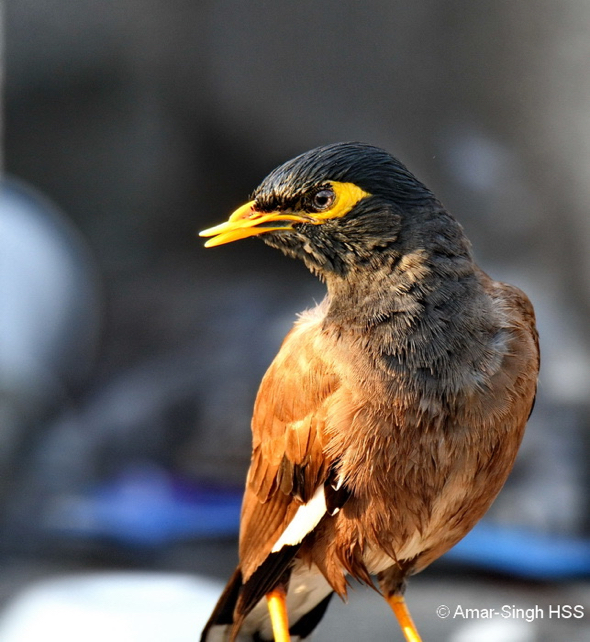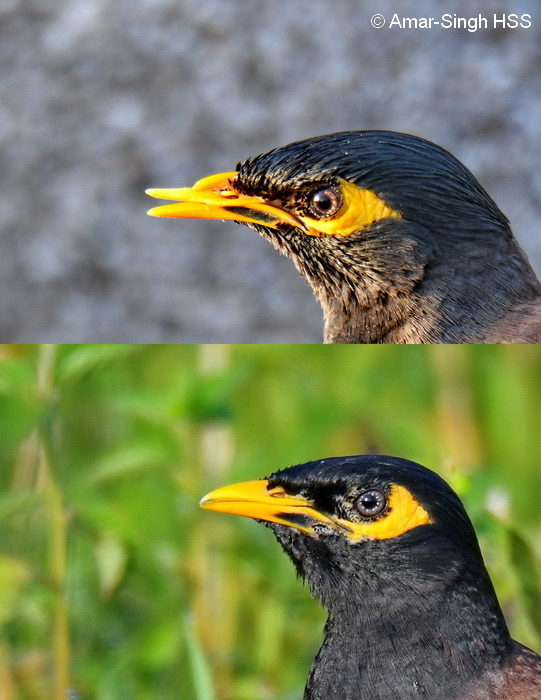“As bird watchers we occasionally come cross birds with deformed bills, also known as Avian Keratin Disorder (AKD).

“I saw a single Common Myna (Acridotheres tristis tristis) with deformity of the upper mandible (see Common Myna 1 & 2). There were other Common Myna around, in pairs, but this bird appeared to be a loner and was possibly socially isolated. AKD in this bird involved a upward tilt of the upper mandible with extra ‘tissue’ as a ridge above the mandible. See composite Common Myna 3, comparing it with an unaffected Common Myna. It appeared otherwise healthy and I saw it catch an insect to feed on (see Common Myna 4).

“The United States Geological Survey’s Alaska Biological Science Center began researching Avian Keratin Disorder since 1999 (see reference 1) and track AKDs via a reporting website (reference 2).
“They describe KD as ‘characterized by dramatic beak deformities such as elongation, crossing, or curvature, and disables infected birds by severely impairing basic behaviors—including feeding and preening—that are crucial to their survival.’ In some surveys they report up to 8% of Chickadees to have deformed bills. More importantly they have determined that some birds are ‘born with normal bills and later develop deformities’.

“They suggest that research into AKD excludes bacterial or fungal infections, bird feeders and contaminants and that current work suggests a viral agent, Poecivirus (see reference 3).

“The Royal Society for the Protection of Birds website describes trauma, congenital defects, disease and parasites as causes for bill deformities (see reference 4).
“Craves (1994, see reference 5) was one of the first to report this in the literature and advises monitoring AKD.
“I think it would be important to consider environmental pollution, especially chemicals, as a key possibility for such deformities, especially if congenital.”
Dato’ Dr Amar-Singh HSS
Ipoh, Perak, Malaysia
23rd April 2018
Location: Ipoh, Perak, Malaysia
Habitat: Urban environment
References:
1. Deformed Bill Research. Cornell Lab of Ornithology. https://feederwatch.org/learn/articles/deformed-bills-alaska/
2. United States Geological Survey’s Alaska Biological Science Center https://alaska.usgs.gov/science/biology/landbirds/beak_deformity/index.html
3. California Academy of Sciences (2016). Newly discovered virus a prime suspect in often-fatal beak disorder spreading among birds. https://phys.org/news/2016-07-newly-virus-prime-often-fatal-beak.html
4. The Royal Society for the Protection of Birds (RSPB) LINK
5. Craves, J.A. 1994. Passerines with deformed bills. North American Bird Bander, 19(1):14-18. Available at: LINK.








